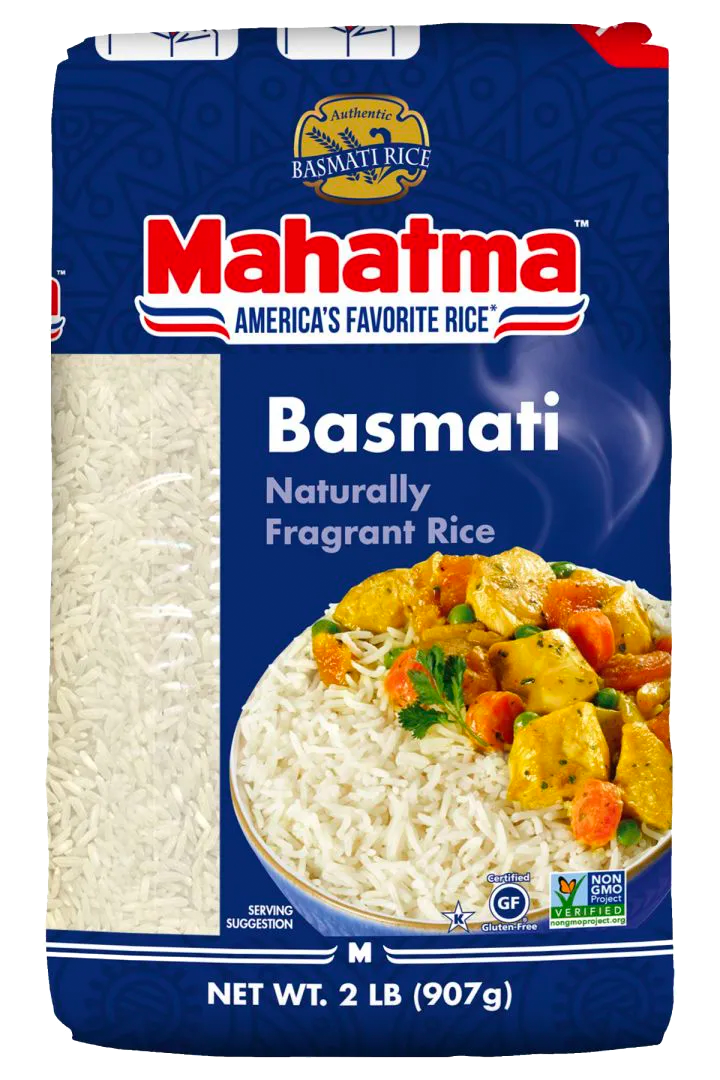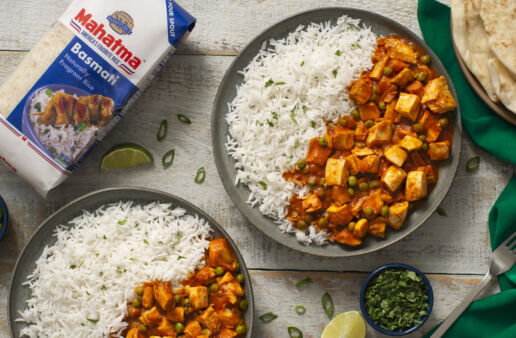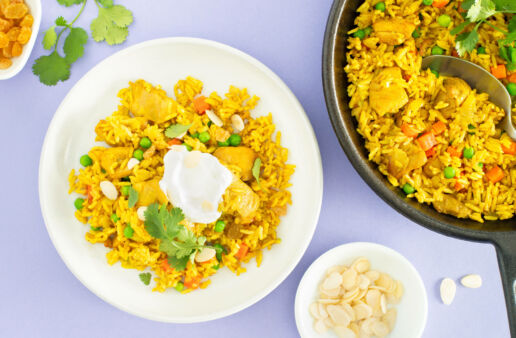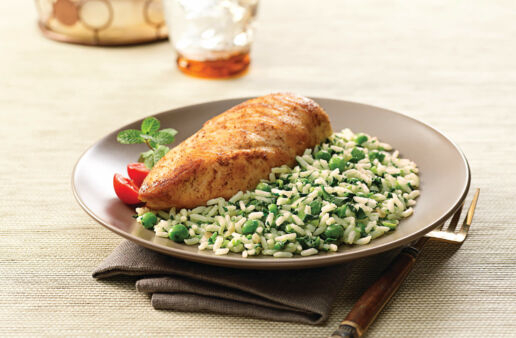
Chicken Biryani
Instructions
This amazing South Asian rice dish is made with our fragrant and delicious Basmati.
Step 1
In a medium bowl, stir together yogurt, lemon juice, oil, ginger, garlic, garam masala, turmeric, 1 tbsp salt, black pepper, cumin and paprika. Toss in chicken until well coated. Cover and marinate in refrigerator for at least 4 to 6 hours but overnight is best.
Step 2
Preheat broiler on HIGH. Place chicken on lightly greased foil-lined baking sheet. Broil for 10 to 12 mins or until starting to brown.
Step 3
Meanwhile, heat 1/4 cup ghee in large Dutch oven or saucepan set over medium heat. Add cinnamon stick, cardamom, cloves, star anise and bay leaves. Cook for 2 to 3 mins or until toasted and fragrant. Stir in onions and cook for 5 to 8 mins or until tender and lightly golden.
Step 4
Stir in rice, remaining salt and saffron. Cook for 3 to 5 mins or until well coated. Stir in 3 1/2 cups water and bring to a boil. Cover and reduce heat to low. Cook for 15 to 20 mins or until rice is tender and absorbs most of the liquid. Add chicken juices from baking sheet into the rice and stir. Nestle in chicken pieces. Cover and cook for 5 to 8 mins or until rice has absorbed all the liquid.
Step 5
Garnish with cilantro and mint before serving
Recipe Tips
Remove bay leaves and whole spices if desired.
For festive biryani, add frozen 1 cup peas in the last 5 mins of cooking. Serve with a dollop of yogurt. Garnish with sliced almonds, pistachios, dried chopped apricots, fried shallots and fresh thinly sliced chilies.
What is Garam Marsala?
Indian cuisine frequently uses a mixture of ground spices known as garam masala. To enhance taste and scent, the garam masala ingredients are typically roasted before being ground. Simply put, masala and garam mean “spices” and “spicy,” respectively. Yet, garam masala isn’t always considered to be a particularly spicy mixture.
What is it Made Of?
The typical ingredients in garam masala are:
Coriander
Cardamom
Roasted pepper
Cinnamon
Nutmeg
Turmeric
What Does it Taste Like?
Warmth, sweetness, floral undertones, and a hint of fire from the black pepper are all added by garam masala. It is meant to be both a tasty and fragrant spice. Although turmeric, coriander, and cumin may make you think of a curry, garam masala is typically not extremely hot.
Cooking with Garam Marsala
Near the conclusion of cooking, garam masala is typically used to season the food and enhance the aroma. The dish can also have some extra garam masala sprinkled on top of it. Garam masala is often prepared fresh from the constituent spices and consumed within a few days. Frequently, it isn’t a dish’s only seasoning or spice.
Substitutions
As the term “garam masala” merely refers to “spices with varied levels of heat,” you have a lot of flexibility when creating your own garam masala or finding a replacement when making an Indian cuisine. Any recipe’s ingredient list can be consulted before modifying it with spices you already have on hand. In order to select the spice blend that you like the most, experiment with your garam masala recipe.
Where to Buy
In a well-stocked supermarket, garam masala can be found in the international or spice area. Your best source is likely to be an Indian grocery or international specialty shop. These shops are also fantastic places to purchase the individual garam masala ingredients for far less money (and probably fresher) than in a supermarket. You will get the greatest flavor if you make your own will using the ingredient spices.
Storing
Garam masala should be kept in a cool, dark place in an airtight container. It is best to use ground garam masala as soon as possible because it loses its power quite rapidly. Although it won’t spoil, you should utilize it within a few weeks, though you can use it for up to six months. As the dish ages, you should anticipate using more garam masala to achieve the desired flavor.
If you like dishes made with Basmati Rice, try our: Rice Pilaf with Basmati.
Recipe Video
Looking for a yummy dessert idea? Try our: Spanish rice pudding recipe.






